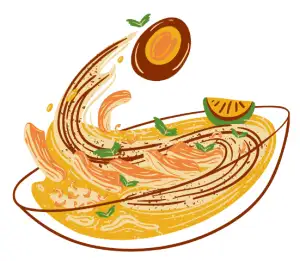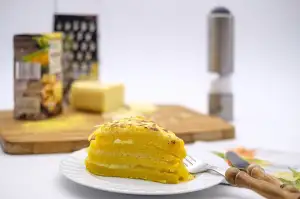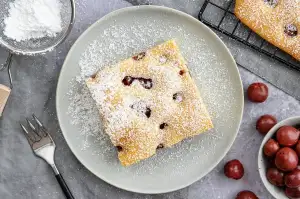Mastering Your Convection Oven: Essential Guide for Home Cooks

- Preheat the Convection Oven: Set the desired temperature according to the recipe.
- Adjust Cooking Time: Reduce the cooking time by about 25% compared to a conventional oven.
- Use the Right Cookware: Opt for shallow pans to allow hot air to circulate evenly around the food.
- Avoid Overcrowding: Leave enough space between dishes for proper air circulation.
- Monitor the Food: Check on the food periodically to prevent overcooking.
- Utilize the Convection Setting: Select the convection setting on the oven control panel.
- Rotate Dishes: For more even cooking, rotate dishes halfway through the cooking process.
- Allow for Resting Time: Let the food rest after cooking to allow flavors to settle before serving.
Preheat the Convection Oven: Set the desired temperature according to the recipe.
Preheating your convection oven is essential to ensure that your food cooks evenly and thoroughly. To start, set the desired temperature according to the recipe you are following. Most convection ovens have a preheat setting that will alert you when it has reached the desired temperature. This step is crucial for optimal cooking results, as it allows the hot air to circulate effectively throughout the oven, cooking your food more efficiently and evenly. Remember to always preheat your convection oven before placing any food inside to achieve the best possible outcome.
Adjust Cooking Time: Reduce the cooking time by about 25% compared to a conventional oven.
When using a convection oven, it is important to adjust the cooking time compared to a conventional oven. Due to the circulating hot air in a convection oven, food cooks faster and more evenly. As a general rule of thumb, it is recommended to reduce the cooking time by about 25% when using a convection oven. This adjustment helps prevent overcooking and ensures that your dishes are cooked to perfection. Be sure to keep an eye on your food as it cooks to make any additional timing adjustments if needed.
Use the Right Cookware: Opt for shallow pans to allow hot air to circulate evenly around the food.
When using a convection oven, it's essential to choose the right cookware to ensure optimal cooking results. Opt for shallow pans or baking sheets rather than deep dishes to allow hot air to circulate evenly around the food. This circulation helps in browning and crisping the food more effectively. Shallow pans also promote faster cooking times as the heat can reach the food more efficiently. Additionally, using light-colored pans can help prevent over-browning of the food due to excessive heat absorption. By selecting the appropriate cookware, you can make the most out of your convection oven and achieve deliciously cooked meals every time.
Avoid Overcrowding: Leave enough space between dishes for proper air circulation.
To ensure optimal cooking results in a convection oven, it is crucial to avoid overcrowding the oven space. Leaving enough room between dishes allows for proper air circulation, ensuring that hot air can flow evenly around the food. This helps to promote even cooking and prevents any areas from being undercooked or overcooked. By spacing out your dishes appropriately, you can maximize the efficiency of the convection oven and achieve delicious, evenly cooked meals every time.
Monitor the Food: Check on the food periodically to prevent overcooking.
To ensure your dishes come out perfectly cooked in a convection oven, it's crucial to monitor the food periodically throughout the cooking process. This helps prevent overcooking and ensures that your food is cooked to perfection. By checking on your food regularly, you can make any necessary adjustments to cooking time or temperature to achieve the desired results. Remember, every dish is different, so keeping an eye on your food is key to mastering your convection oven.
Utilize the Convection Setting: Select the convection setting on the oven control panel.
To utilize the convection setting on your oven, locate the control panel and look for the convection option. This setting activates the fan inside the oven, which helps to circulate hot air around the food more efficiently. By selecting this setting, you can ensure that your dishes cook more evenly and faster than in a conventional oven. Be sure to follow the manufacturer's instructions on how to properly set and adjust the convection setting for optimal results.
Rotate Dishes: For more even cooking, rotate dishes halfway through the cooking process.
To ensure even cooking in a convection oven, it's essential to rotate dishes halfway through the cooking process. This simple step helps to promote uniform browning and cooking of the food. By rotating the dishes, you allow all sides to be exposed to the hot air circulating within the oven, resulting in more consistent results. Remember to use oven mitts or heat-resistant gloves when handling hot dishes to avoid burns. Mastering this technique will elevate your cooking skills and ensure delicious meals every time.
Allow for Resting Time: Let the food rest after cooking to allow flavors to settle before serving.
Allowing food to rest after cooking is a crucial step in ensuring the flavors have time to settle and develop fully before serving. Resting meat, for example, allows the juices to redistribute evenly throughout the cut, resulting in a more tender and flavorful dish. This resting period also helps prevent the food from drying out as it continues to cook slightly from residual heat. For optimal results, cover the food loosely with foil during resting to retain moisture while still allowing excess steam to escape. By incorporating this simple yet essential step into your cooking routine, you can elevate the overall taste and texture of your dishes.
Published: 10. 03. 2024
Category: Food



